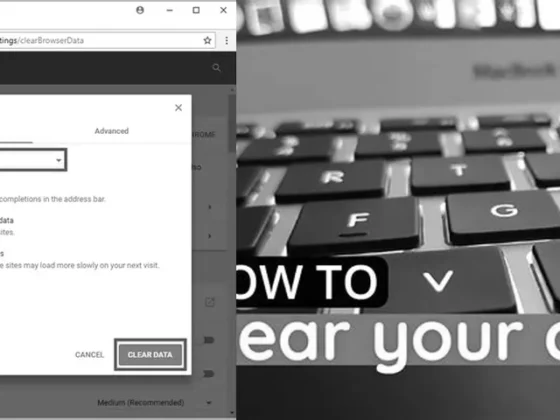How to Connect Your Chromebook to a Monitor with USB-C: A Comprehensive Guide – Are you tired of squinting at the small screen of your Chromebook? Wish you could enjoy a larger display for work or entertainment? Well, you’re in luck! In this blog post, we’ll show you exactly how to connect your Chromebook to a monitor using the USB-C port. Whether you’re a tech-savvy guru or a newbie to the Chromebook world, we’ve got you covered. Say goodbye to eye strain and hello to a bigger, better viewing experience. So, let’s dive in and unlock the full potential of your Chromebook!
Understanding Chromebook Connectivity Options
Chromebooks, known for their simplicity and efficiency, offer multiple ways to connect to external displays. Whether you’re presenting in a meeting or setting up a dual monitor workspace, you have various port options at your disposal. Understanding your Chromebook’s connectivity options is the first step to expanding your visual workspace.
Common Ports on Chromebooks
Most Chromebooks come equipped with an HDMI or USB-C port, sometimes even both. These are your gateways to connecting external monitors or TVs. Additionally, some models may include DisplayPort, DVI, or VGA ports, though these are less common. Let’s focus on the more prevalent USB-C and HDMI connections.
Connecting Chromebook to a Monitor via USB-C
USB-C is increasingly becoming the preferred standard for its versatility and power delivery capabilities. If your Chromebook and monitor both support USB-C, you’re in for a straightforward setup.
Step-by-Step Guide to USB-C Connection
- Ensure both the Chromebook and the monitor are powered on.
- Take a USB-C cable and connect one end to the USB-C port on your Chromebook.
- Connect the other end of the cable to the USB-C input port on your monitor.
If your monitor doesn’t have a USB-C port, you can use an adapter or a hub that converts USB-C to another port on your monitor, such as HDMI, DisplayPort, or DVI.
Configuring Display Settings on Your Chromebook
Once connected, your Chromebook might not immediately display the content on the external monitor. To configure the settings:
- Go to the Chromebook’s Settings.
- Select ‘Displays’ in the Device section.
- Here, you will see options for your built-in display and the external monitor.
- Choose ‘Mirror Built-in Display’ to have both screens show the same content.
- Alternatively, you can extend your desktop to use the monitor as additional workspace.
Using USB-C for More Than Just Display
USB-C doesn’t only transmit video. It can also deliver power and data, allowing you to connect peripherals like mice, microphones, and speakers, often without needing additional power sources.
Alternative Connections: HDMI and Adapters
If your Chromebook has an HDMI port but your monitor only supports USB-C, an adapter cable will bridge the connection gap.
Connecting HDMI to USB-C Monitor
- Locate the HDMI port on your Chromebook.
- Connect the HDMI end of the adapter cable to it.
- Then connect the USB-C end to your monitor.
- Follow the previous display settings configuration steps to get the monitor running.
This setup allows you to use your Chromebook’s HDMI capability while taking advantage of a USB-C monitor’s features.
No HDMI? No Problem!
If your Chromebook lacks an HDMI port, you’re not out of options. As mentioned earlier, Chromebooks can also connect to monitors with DisplayPort, DVI, or VGA ports using suitable adapters or converter cables. The process remains the same: connect, configure, and continue with your enhanced visual setup.
Maximizing Your Chromebook’s Display Capabilities
Connecting your Chromebook to an external monitor can significantly enhance productivity and entertainment experiences. Whether it’s for multitasking with multiple windows, delivering presentations, or streaming media, a larger display can make a world of difference.
Choosing the Right Equipment
To ensure a seamless connection, it’s critical to choose the right cables and adapters. Always check for compatibility with both your Chromebook and the external monitor. High-quality cables and adapters can also affect display performance and reliability.
Getting Creative with Multiple Displays
With the correct setup, you can even connect multiple monitors to your Chromebook, creating an expansive and immersive workstation. By extending your display across several screens, you can keep numerous applications open and visible, boosting your efficiency and multitasking capabilities.
Troubleshooting Common Issues
Even with the right connections, sometimes things don’t go as planned. Here are a few troubleshooting tips:
Monitor Not Detected
If your Chromebook doesn’t recognize the monitor, check your connections and cables for any faults. Try disconnecting and reconnecting or using a different port if available.
Poor Display Quality
Subpar image quality can often be attributed to using low-quality cables or adapters. Ensure that your accessories support the necessary resolution and refresh rate for your monitor.
Display Settings Not Working
If adjusting the display settings on your Chromebook isn’t having the desired effect, try restarting your device with the monitor connected. Sometimes, a fresh boot allows the Chromebook to correctly identify the external display and apply settings.
Conclusion
Connecting your Chromebook to an external monitor via USB-C is not only possible but also remarkably simple. Whether you’re using a direct USB-C to USB-C connection or navigating through adapters and different port types, the versatility of Chromebooks can meet the demands of various display setups. Remember to choose the right accessories, configure your settings appropriately, and enjoy the expanded capabilities of your Chromebook.
By following the steps laid out in this guide and utilizing the troubleshooting tips if needed, you’ll be well on your way to an enhanced viewing experience that leverages the full potential of your Chromebook and external monitor.
FAQ & Related Questions about How Do I Connect My Chromebook To A Monitor With USB-C?
Q: Can I connect my Chromebook to a monitor using USB-C?
A: Yes, you can connect your Chromebook to a monitor using USB-C. You will need to connect the cable to your Chromebook’s USB-C port or hub, and the other end of the cable to the input port on your monitor (HDMI, DisplayPort, or USB-C).
Q: How do I get my Chromebook to recognize the external monitor?
A: To get your Chromebook to recognize the external monitor, go to Settings, select Displays in the Device section, and choose “Mirror Built-in Display” when the monitor is connected.
Q: Can I use a USB-C to HDMI cable with my Chromebook?
A: Yes, you can use a USB-C to HDMI cable with your Chromebook. The Cable Matters USB-C to HDMI Cable allows you to easily connect the latest Chromebooks with USB-C to an external monitor, UHD TV, or projector with HDMI. You can mirror or expand your desktop and stream audio and video at 4K 60Hz.
Q: How do I connect a USB-C monitor to HDMI?
A: If your laptop has an HDMI port and your monitor has a USB-C port, you can connect them using an HDMI to USB-C adapter cable. Simply connect the HDMI end of the adapter cable to the HDMI port on your laptop and the USB-C end to the USB-C port on your monitor.
Q: Can I connect a Chromebook to a monitor without HDMI?
A: Yes, you can connect a Chromebook to a monitor without HDMI. Chromebooks can be connected to an external monitor or TV with an HDMI, DisplayPort, DVI, or VGA port.


